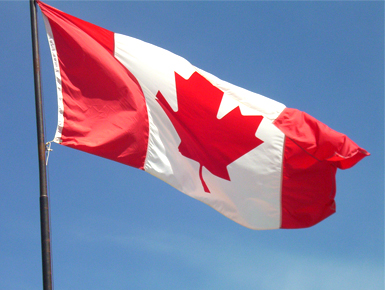In 1535, two aboriginal youths told an early explorer about the route to kanata. They were referring to the village of Stadacona; kanata was simply the Huron-Iroquois word for “village” or “settlement.” But for want of another name, Cartier used Canada to refer not only to Stadacona (the site of present day Quebec City), but also to the entire area subject to its chief, Donnacona. The name was soon applied to a much larger area: maps in 1547 designated everything north of the St. Lawrence River as Canada.
Jacques Cartier also called the St. Lawrence River the rivière de Canada, a name used until the early 1600s. By 1616, although the entire region was known as New France, the area along the great river of Canada and the Gulf of St. Lawrence was still called Canada.
Explorers and fur traders soon opened up territory to the west and to the south and the area known as Canada grew. In the early 1700s, the name referred to all the lands in what is now the American Midwest and as far south as the present day Louisiana.
The first use of Canada as an official name came in 1791 when the Province of Quebec was divided into the colonies of Upper and Lower Canada. In 1841, the two Canadas were again united under one name, the Province of Canada. At the time of Confederation, the new country assumed the name of Canada.
In 1867, British colonies in North America were united under the British North America Act to become the Dominion of Canada with Ottawa established as the capital city of the Dominion.

